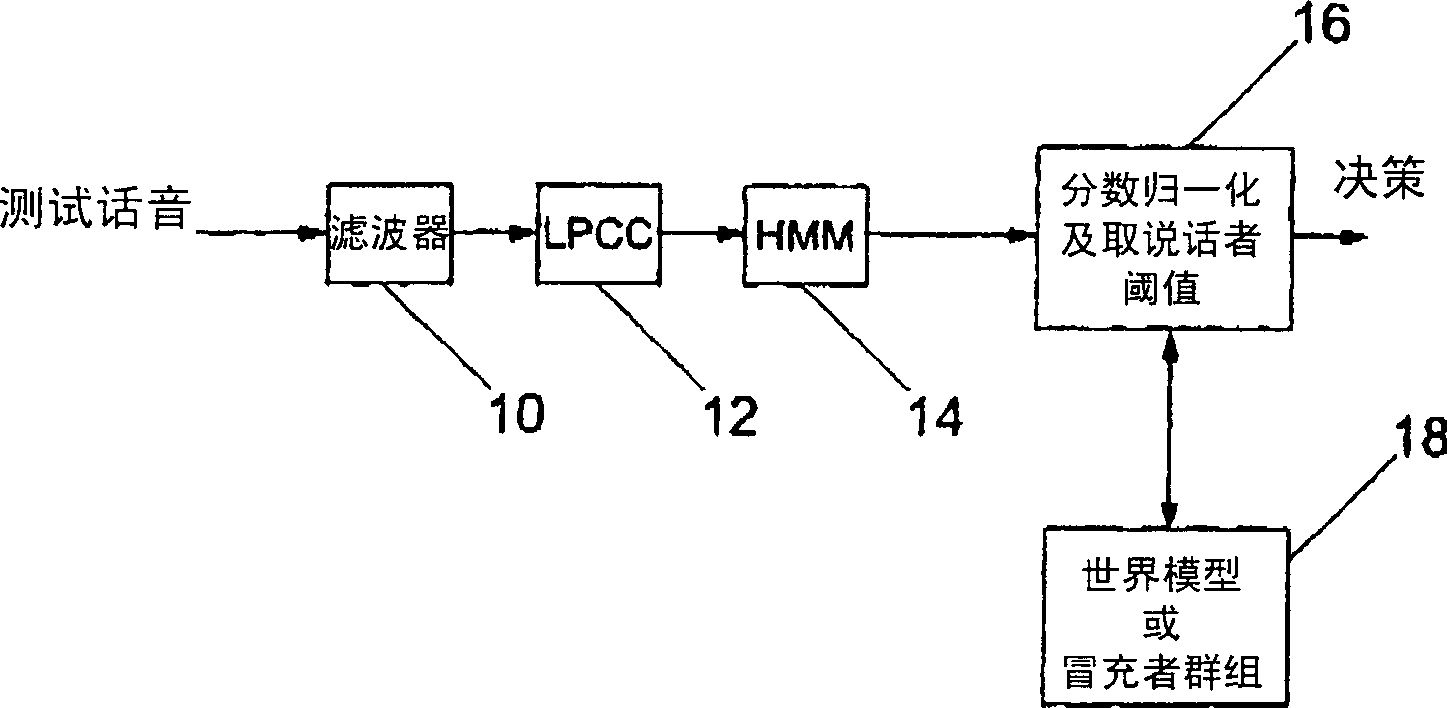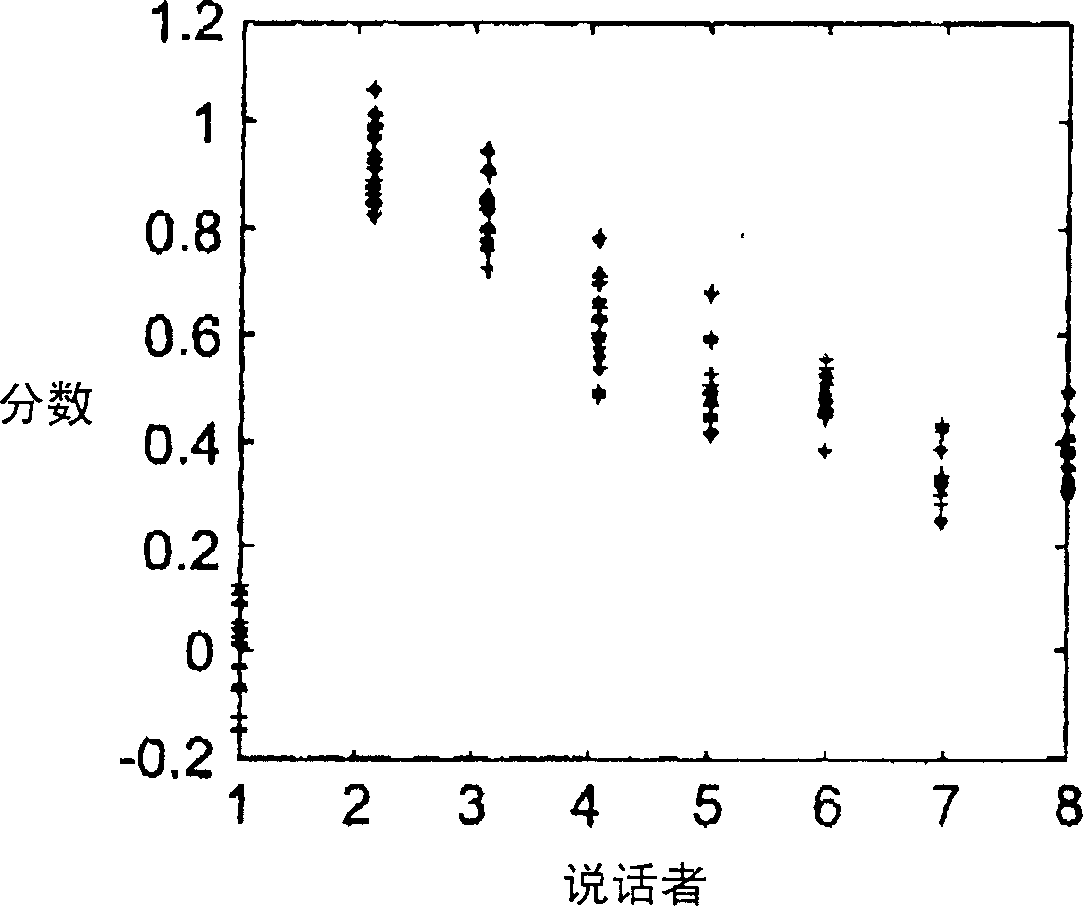Speaker recognition systems
A technology for identifying systems and speakers, applied in speech analysis, instruments, etc., can solve the problems of HMM model that does not allow model-to-model comparison, cannot be easily world model/impersonation group, cannot be effectively analyzed and used, etc.
- Summary
- Abstract
- Description
- Claims
- Application Information
AI Technical Summary
Problems solved by technology
Method used
Image
Examples
Embodiment Construction
[0035]In order to provide an improved speaker recognition (authentication and / or discrimination) system, the present invention comprises various aspects and features which can be combined in various ways. Some of these aspects relate to the way speech samples are modeled during speaker registration and subsequent recognition of input speech samples. Other aspects concern how the input speech model is classified in order to enable decisions about speaker identity. Yet another aspect concerns the normalization of the speech signal input to the speaker recognition system (channel normalization). Another aspect concerns the application of speaker recognition systems.
[0036] now refer to Figure 4 to Figure 6 The basic structure used by the system incorporating the different aspects of the invention is described. It will be understood that the input to the embodiments of the invention described herein are all digital signals including speech samples, which have been previously...
PUM
 Login to View More
Login to View More Abstract
Description
Claims
Application Information
 Login to View More
Login to View More - R&D
- Intellectual Property
- Life Sciences
- Materials
- Tech Scout
- Unparalleled Data Quality
- Higher Quality Content
- 60% Fewer Hallucinations
Browse by: Latest US Patents, China's latest patents, Technical Efficacy Thesaurus, Application Domain, Technology Topic, Popular Technical Reports.
© 2025 PatSnap. All rights reserved.Legal|Privacy policy|Modern Slavery Act Transparency Statement|Sitemap|About US| Contact US: help@patsnap.com



